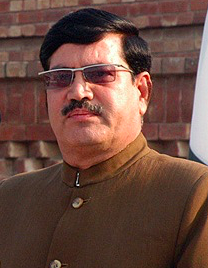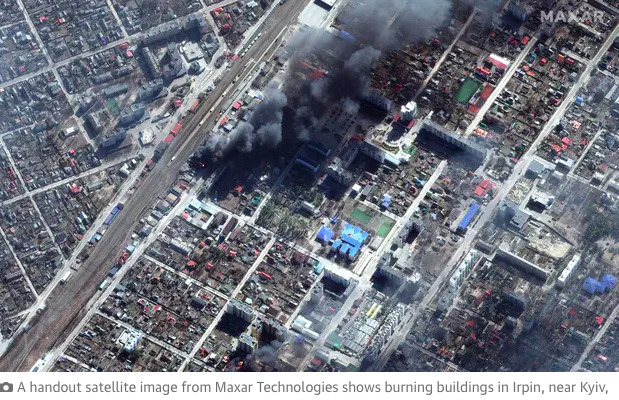Having seen Russia attack Ukraine for whatever reasons, with territorially ambitious neighbour like China and a vouched adversary, Pakistan, India must be completely self-reliant in defence preparedness, rather than banking on the US, Russia or anyone else. In today’s panic-stricken world, nobody is anybody’s friend but one’s own, as has been depicted in the case of the US and NATO nations, ditching Ukraine in the lurch, when it needed them the most. This is a universal truth that only powerful and militarily strong nations are taken up seriously by the other world powers.
As has been witnessed so many times in the case of the US and certain other nations, war is the ultimate instrument of state power which is employed by a country as a last resort. Truth is that most conscientious and accountable leaders would avoid indulging in the horrendous adventurism of war owing to the irreparable and irreversible loss to human life, property and other assets. If a country is militarily backward, stronger nations’ mouths often water for the forceful occupation. This has been seen in the Middle-East in the wars imposed upon some Arab nations by US and NATO supported Israel in the past for territorial and political issues. Even in 1962-63, China used the same illogical method to occupy the Indian territory.
Ukraine, first being pushed by the US and NATO on account of hollow and false promises and subsequently deceived and left alone to be pounded by a hundred times stronger Russia, is again the same old story of a David being pitted against Russia!
After observing the expansionist urge in Russia and China, India must not remain complacent in view of two nuclear nations and even the neighbours like Sri Lanka and Nepal. God forbid, let there be no world war but despite that India must be alert and alarmed of both, Russia and Pakistan and the strategy of tacking one diplomatically and the other one militarily rather than opening both the fronts, might not work. If there is any war-like scenario, both China and Pakistan will, in all probability, trap India.
Reality is that India, as per her commitment to the “Panchsheel” policy of international peace, has never attacked any nation. Indian Policy makers understood the linkage between peace and development and survival of mankind. In view of the destruction caused by the two world wars, they realized that for the progress of a nation, a durable world peace was needed. Without global peace, social and economic development is likely to be pushed to the background.
While India has left no stone unturned in pursuing diplomatic efforts for improving relations with the neighbours , a crucial matter of concern has been the repeated terrorists’ and insurgents’ infiltrations both by Pakistan and China. This is also true that relations between India and China have been worsening during the recent months. Though India believes in tackling one neighbor by diplomacy while taking the other straight on, yet the Sino-Pak attack threat is imminent.
India and China, the two world powers, are facing off against each other along their disputed border in the Himalayan region at the LAC (Actual Line of Control). Tensions have remained hotter despite the less than zero freezing temperatures there, especially after the showdown between the India soldiers and the Chinese PLA, where 20 Indian soldiers and an equal number of the Chinese had to lay down their lives. The Chinese mouth has always watered for Indian territory, especially, Arunachal Pradesh.
The track record of terrorist attacks on India at the behest of Pakistan, including the Pulwama attack, Uri attack, Parliament blast, Jaipur blast, Delhi blast and many more, have forced India to be the second-largest importer of defence equipment after Saudi Arabia. This weaponry is extremely expensive and has been telling on the national economic growth.
However, time is ripe for India to be absolutely self-reliant especially witnessing the current Ukraine-Russia crisis and the way China has her malicious designs on Taiwan and Hong Kong have been exposed. Of course a matter of worry has been the way China has been infiltrating into the 3,440km (2,100-mile)-long ill-defined and disputed Sino-Indian border. No country will help, if China attacks. A seething example of this is the help required by Pakistan in the December 1971 Indo-Pak war while the Indian army launched blitzkrieg into the erstwhile East Pakistan (now Bangladesh) where the American President RM Nixon, after being requested by the Pakistani dictator, General Yahya Khan , at the behest of Henry Kissinger, sent its US Seventh Fleet’s Task Force 74, led by the nuclear powered aircraft carrier “Enterprise”, to proceed towards the Bay of Bengal.
Though the Seventh Fleet did come at the behest of the Pak President General Yahya but couldn’t do anything and Pakistan lost its eastern territory of the former, East Pakistan along with 97,000 soldiers. Neither China proved efficacious in the Pakistan misadventure of suppressing the Bangla speaking masses, nor the US except with the jargon of hollow promises. India should have learnt a lesson from that episode. Frankly speaking, after the Galwan valley skirmishes, even China came to know that India is a tough nut to crack with one of the best and largest of the armies. Therefore, if a country is weak, anybody may take the advantage.
According to retired Lt Gen Balbir Singh Sandhu, “Aatm Nirbhar Bharat” (self-reliance) policies of the government are very well received but their implementation must not result in delays and procurement of poor-quality weapons and equipment from the defence PSUs. Development of light combat aircraft (LCA) and Arjun, main battle tank (MBT), have taken decades which highlight the shortcomings in our indigenization programmes. Nevertheless, in spite of the kick back taken in the Bofors AB during the 1980s and 1990s, in the 1999, Kargil Indo-Pak war, it was this gun only that sent the Pak soldiers back. Truth is that countries take decades to be globally competitive in defence industry and strategy. Merely, lip-service announcement of policies will not be sufficient.
Another loophole is the problem of bureaucratic delays that come in the way of prompt arms supply and hence, rightly suggested by Sandhu that there is an urgent need to integrate the military and bureaucracy. All bureaucrats must do at least one year of compulsory military service at the beginning of their career in active military units and those who are likely to be involved in procurement, must do periodic stints with armed forces and attend their professional courses so that they understand the ground realities. Besides, some officers from the services must be laterally inducted into the Ministry of Defence after about 15 years of service on a permanent basis so that they can make valuable contributions by becoming part of the procurement set up. Having learnt from the past of the alliances like the NATO, where members share the cost of defence preparedness, India is to bear the high cost of maintaining standing armed forces that need to fight by themselves in the absence of an alliance.
As per the defence experts, about 2 to 3% of the GDP expenditure by a country is considered optimum to have the right balance between development and security. What’s lamentable is that India’s defence budget as percentage of the GDP has been diminishing over the passage of time, presently assessed at about 2% that is really wanting. Truly, defence preparedness must be supported by a vigorous economy so that development and defence go simultaneously. Though the QUAD (Quadrilateral Security Dialogue) is there in the Indo-Pacific sea to counter any adventurism by China in sea and the Himalayas are the natural saviours of India, in case of any attack from China, nobody would come to the rescue of China as has been the case of Ukraine.
Apart from that, transfer of defence technology, competitive research and development and active participation of private sector must be heeded to, to produce weapons and equipment of international standards. In addition to that, high rate of economic growth for a sustained period is a must for the country to support military modernization. Why Ukraine won’t be able to continue defending in the war is because its economy has been limping.
Remember, there are no compromises in war. The only solution for a nation like India is a highly perfect and indigenous defence industry to make India a force to reckon with as military power. Why India wasn’t taken seriously by China in 1962 was basically owing to the reason that India wasn’t a military self-reliant country.
Finally, the recent assault by Russia against Ukraine is a classic case of a bigger fish consuming the smaller one and India must be up with the best in defence industry with the active participation of the private sector besides a high rate economy parameter.

Firoz Bakht Ahmed is a former chancellor of Maulana Azad National Urdu University (MANUU), commentator on educational and social issues, community worker and the grandnephew of Bharat Ratna Maulana Abul Kalam Azad. He lives in Delhi



